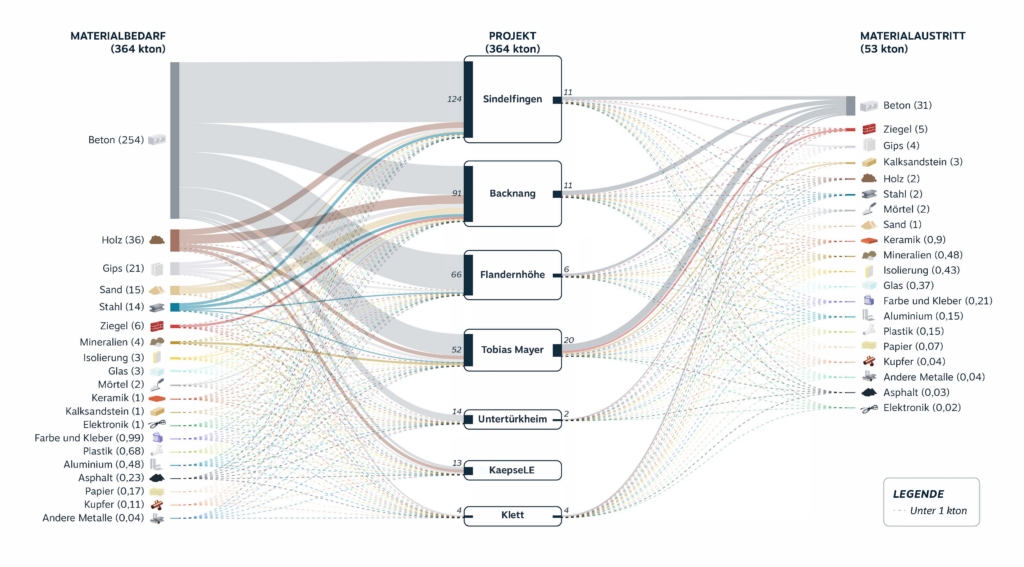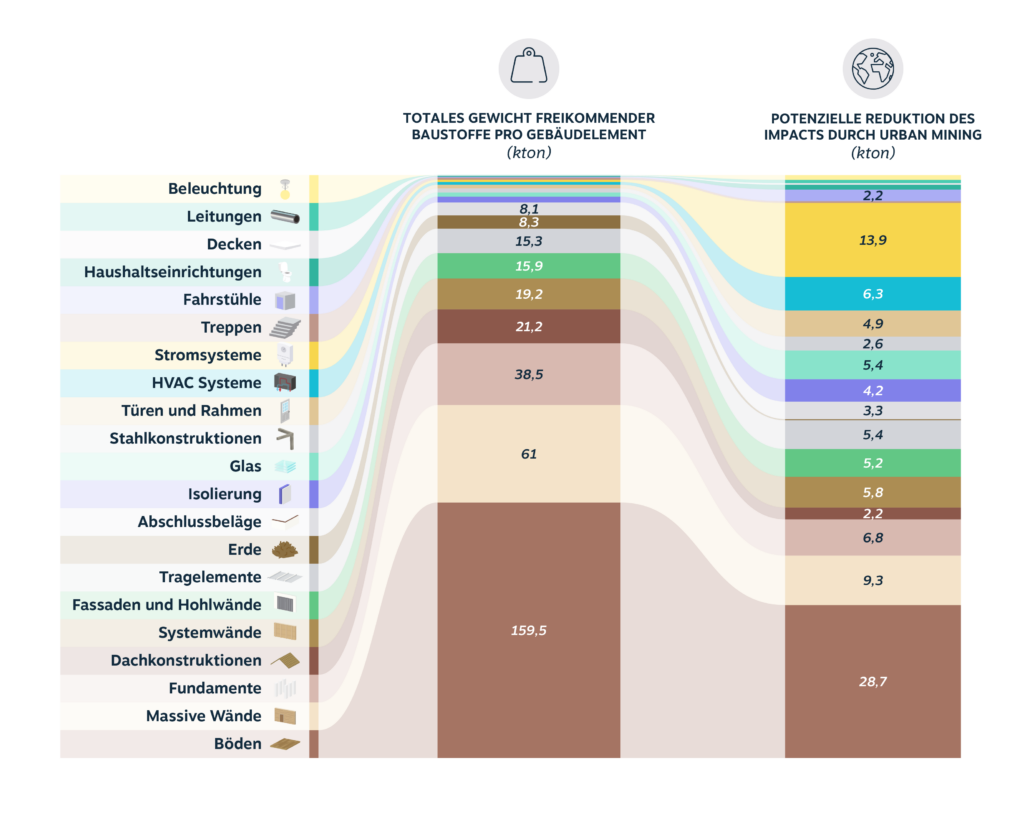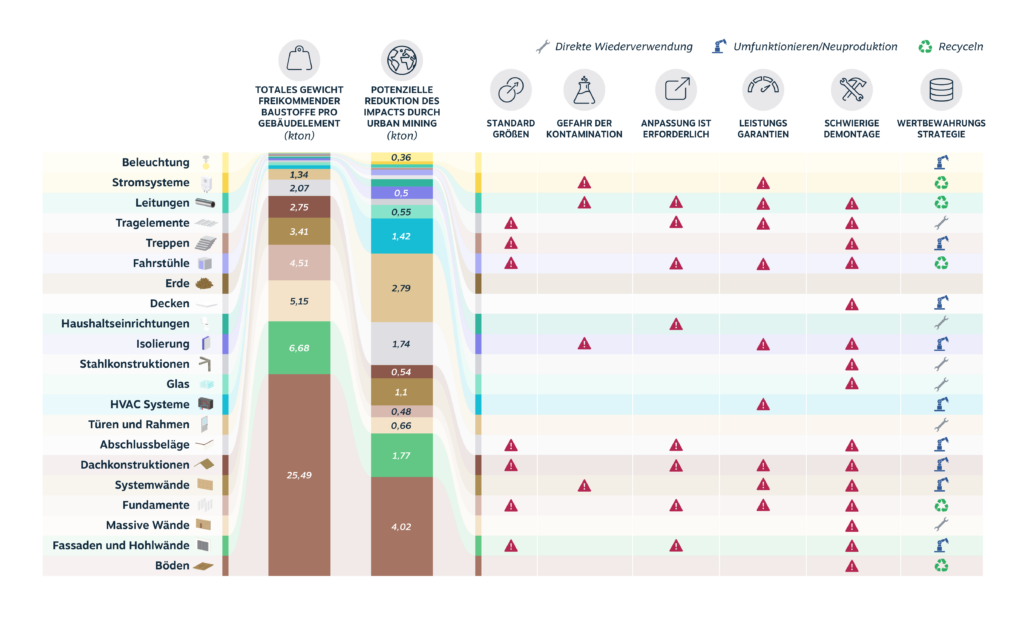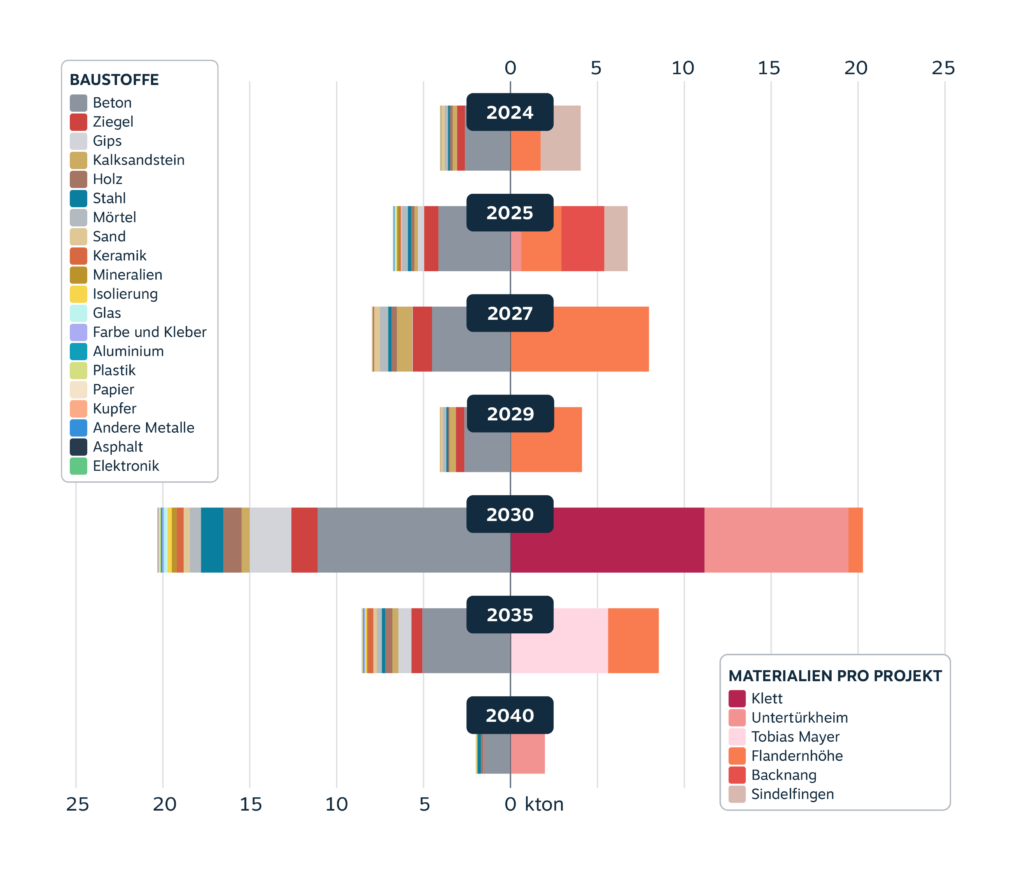Urban Mining Scan
Urban Mining Scan as a driver of the circular economy
With the urban mining scan of seven selected IBA’27 projects, we have precise data on the materials used in our buildings for the first time: Which materials are available and in what quantities, which will soon be released or are still needed? This scan is an important piece of the puzzle when it comes to operating buildings in a resource-efficient manner!
The following charts show at a glance how materials flow in our buildings – from use, supply and demand to potential savings. They not only provide a visual representation of the material flow, but are also the first step towards developing realistic strategies for reuse, savings and CO2 reduction!
To the complete urban mining scan
Overview of Material Flow
This graphic illustrates the material flow in the seven IBA’27 projects—how much building material is released from deconstruction projects and how much is needed for new constructions. The challenge is particularly evident with concrete: thousands of tons are removed, but only a fraction can be reused as recycled concrete. How can this cycle be closed?
Material Needs and CO₂ Footprint
How much material does construction require? And what is its CO₂ impact? The left side displays the material volume for new construction and renovation, while the right side highlights the carbon footprint. A striking insight: Some materials, such as electronic systems with solar panels, have a disproportionately high impact.
Recycling Potential
Which materials can be directly reused or recycled? This graphic not only shows the quantities of outgoing materials but also highlights challenges such as contamination, standardization, and dismantling. A key question: How much CO₂ could we save?




